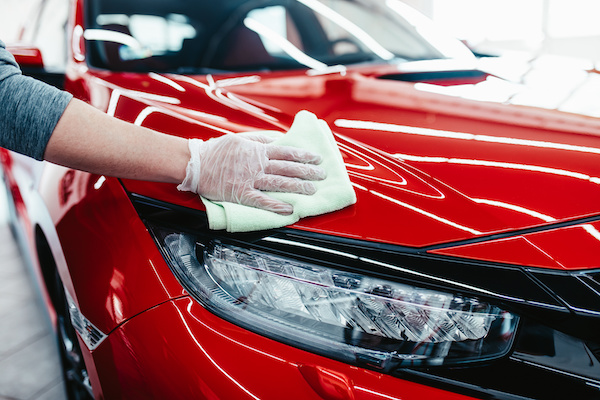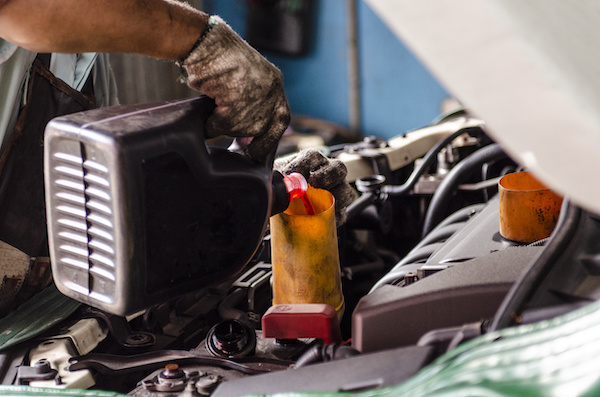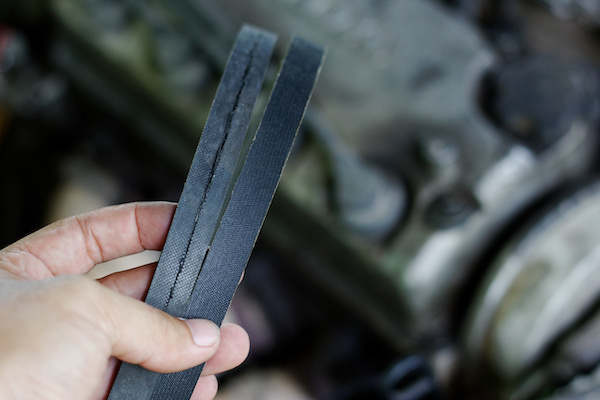Posted on 12/23/2022

Headlights are one of the essential parts of your car to keep clean. With a dirty headlight emitting a nasty glare in the eyes of other drivers, you may as well be driving a rolling wrecking ball. Let's look at the steps needed to clear hazy headlights. Cleaning Your Car's Headlights Step-by-Step Renew the debris surface Remove any dirt, dust, dead bugs, or crud that may have formed on the surface of your headlights by spraying them with a mild cleaner and gently wiping them down. Tissue dry After cleaning, wipe the surface with a dry cloth or towel until all moisture has been removed. Configure headlight restorer Give your headlight lenses a good amount of cleaner and apply it generously. If you use baking soda, make a thick paste by combining it with a bit of water. To let your lens cleaner dry a little, leave it on for a few minutes. Brush out cleaner to remove Work your brush softly around the surface of the headlamp in circular strokes. Take care not to scratch the p ... read more
Posted on 11/30/2022
.jpeg)
The modern car engine has evolved to be more powerful and more durable than it has ever been before. They are sophisticated and resistant to extreme temperatures, despite how cold or hot it is outside. However, negligence and poor-quality maintenance can still lead to the devastating effects of engine overheating. It is important to know how to handle such a situation in case it happens to you. What Causes Engine Overheating? There are various things that can cause your car to overheat. Most of the time, it comes down to the cooling system, which comprises many parts that help cool the engine. These include coolant fluid, water pump, radiator, and more. When these parts wear down or leaks occur, it can cause your motor to overheat. Additionally, a hot day can accelerate the likelihood of overheating. That is why we always recommend having an extra bottle of coolant fluid on hand. What to Do If Your Engine is Overheating First, you should know how to spot an overhe ... read more
Posted on 10/31/2022

When it comes to car maintenance, many things need to be done regularly to keep your car running smoothly. But what fluids specifically need to be changed? Depending on the make and model, several different fluids must be changed in a car. Transmission fluid, brake fluid, power steering fluid, engine oil, and antifreeze are all fluids that might need to be changed regularly. So, why are these exchanges/flushes important? And what can happen if these services aren't performed? Let's find out! Engine Oil It's essential to keep your engine well-lubricated, and that's where engine oil comes in. Engine oil circulates through the engine, removing heat and preventing corrosion. Most carmakers recommend changing your engine oil every 7,500 miles or every six months, whichever comes first. But if you drive in a particularly dusty or dirty environment, you may need to change it more often. Going too long without an oil change could result in you losing your car. Motor oil stop ... read more
Posted on 9/29/2022

The serpentine belt, also known as the fan belt or accessory belt, is a long, snake-like belt that runs through various parts of your automobile. It is made of a thin piece of rubber, and it is responsible for transferring power to your power steering pump, alternator, A/C compressor, and many more vital automobile components. How To Tell When the Serpentine Belt Is Failing Similar to the other belts in your vehicle, you can look for physical signs of a failing belt. Since the belt is made of rubber, it is susceptible to glazing, fraying, and cracking when it is old. Additionally, it may cause some of your vehicle’s vital components (mentioned above) to fail. If your A/C has stopped working recently, don’t let it slip past you that it could be related to the serpentine belt. Another example would be a loss in power steering. If you notice that it takes a lot of energy to turn your wheel, please have this checked out. If your vehicle engine has o ... read more
Posted on 8/30/2022
.jpeg)
Your car's engine starts through fuel and air combustion inside the cylinder. Most modern vehicles have at least four cylinders to keep running even when one fails. However, not at its full potential. This failure may cause an engine to misfire. What's A Misfire? A spark must trigger the combustion of fuel and air compressed inside the cylinder in the correct order. If this sequence fails or any element is missing, the burning reaction will not occur. This combustion failure is called a misfire. The engine cylinders must fire in a precise sequence. Otherwise, it remains unfired. Generally, a misfire is incomplete combustion inside the cylinders. It can happen during startup or when the engine is idling. While most misfires dissipate and your engine may regain full power, it usually signals an underlying problem. Multiple misfires put your engine's components under mechanical strain and may cause bigger issues if unchecked. However, when your car misfires, the check engi ... read more